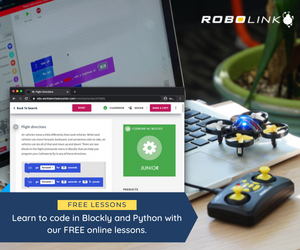What makes an Ideal Grant Application?
Research
- Conducting targeted research helps you find the right funders to partner with and to support your organization’s work. Sending the right proposal to the right funders is the key to any grant in funding a match. Your interest must align with what you’re looking for.
Present a logical solution to a problem
- Think about your proposal as a story with a beginning as the problem or opportunity then a need statement in the middle part of the journey which is your solution to the program and then the ending is the result of what you hope for the overall outcome. Some funders say that they get lost when they read proposals. The solution for this is to present the problem that makes sense to the funder.
Tell your readers, right up front, what you’re going to do with that grant
- Who’s going to benefit? Why should they care? Those are the key points in what makes a grant proposal ideal or good.
Convince the Funder you know what you are doing.
- Proposals must demonstrate that you have a clear understanding of what the needs are in your community and a strong programmatic response.
- After reading your proposal, the funder should feel that your organization will be a responsible steward of their funds. They’re particularly interested in how you’re going to steward their funds, how you’re going to play into their overall objective in terms of funding your needs and meeting theirs as well. So, present a solid plan and highlight the skills, experience of the team involved.
- When you write a proposal, you get a letter of acceptance, support. Make it a real letter from the funder. Try not to make a form letter as people see right through that.
Tell the same story in the budget and the proposal narrative
- Crosswalk what’s in the proposal to what’s in your budget. Make it as narrative as possible. The project budget is another opportunity to tell your story and it demonstrates your credibility which is really important. Many funders tell that budget is often the first thing they look at — what does the budget narrative say? What are the budget documents? Do they align with the grant objectives of the organization? How does the narrative support that? Everything in the budget should be reflected in the narrative as the last thing you want is a budget that raises more questions than answers.
Make a phone call when appropriate.
– Another thing, especially to non-profit organizations, is to make a phone call to the funder when appropriate instead of relying solely on emails or letters. Foundation staff are often receptive to phone calls as they want to help. They are willing to talk to you about pre-proposal, what they’re looking for.
Read and discuss the RFP, RFA and RFI with your team – Know it Backwards and Forwards
- In terms of big proposals, evaluation is king. You’re looking at three real kinds of proposals — RFP, RFA and RFI. RFP is usually something that teachers or school people don’t see. It’s a business document that announces a project that entities are funding and a proposed solution. RFA is something you will see from the classroom to the state house door in terms of wanting to write for a grant. This is the most common form you’ll find so when you search things, look for RFAs. RFI is a solicitation document. Often, districts propose those.
Tips:
Brevity is of the essence. Simple is better.
- Spell out the need
- Being succinct and spelling out what you need is important. Why are you applying for a particular grant? Because you need funding is not a good answer. To increase the chance of being accepted, clearly describe the need for your project, how the project will meet a community need, how it will make a significant impact for good given the equity and access issues that our nation and the world face.
- Differentiate yourself
- Tell how your organizations work. How they are different from other educational institutions, non-profits or schools. Make sure that you highlight the relationship that could be existing with a foundation where you have a common interest.
- Target a specific project for your proposal
- Oftentimes, we write grants with the scope and sequence too wide so you want to be focused on what you really want to say. Majority of the grants are awarded to a specific cause as opposed to just general support. By focusing your grant application on a single project like sixth grade science immersion, seventh grade computer science or middle school. That is more tangible than saying you’re going to do something k-12 and you’re going to study that. Being specific will ensure your chances of getting funded.
- Eliminate industry words and jargon
- A lot of industry words and jargon are not associated with funders. A lot of educators are sometimes lost in translation which can hurt your application.Gear your proposal into specific initiatives and programs
- Be brief and keep focused on your challenge(s)
Grant Resources
If you’re looking for STEM grants, here’s a list of good resources:
STEM Grants for K-12 & Nonprofits
http://stemgrants.com/stem-grants-for-k-12-nonprofits/
State Grants (CA)
https://www.cde.ca.gov/fg/fo/af/
State Grants (PA)
https://www.pasmart.gov/funding/
Federal Grants
https://www.grants.gov/search-grants.html?agencyCode=ED
Amazon Future Engineer/BootUp Grant Applications for Elementary School (no deadline)
What happens if I don’t win a proposal?
- Don’t take it personally. There is a lot of competition!
- Make sure you ask for feedback from the funder and review comments with your team and with the funder. Get it written according to a rubric so you can come back strong the next time you apply.
- Check if communication about the context was spot on




